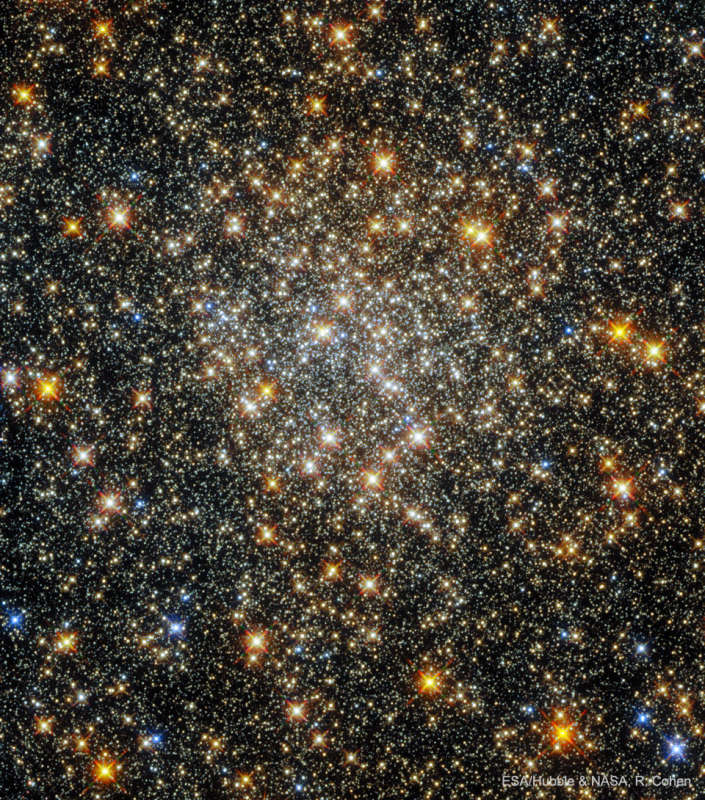Palomar 6: Globular Star Cluster

Explanation:
Where did this big ball of stars come from?
Palomar 6
is one of about 200
globular clusters of stars that survive in
our Milky Way Galaxy.
These spherical star-balls are older than
our Sun as well as older than most stars that orbit in our
galaxy's disk.
Palomar 6 itself is estimated to be about
12.5 billion years old, so old that it is close to --
and so constrains -- the age of the
entire universe.
Containing about 500,000 stars,
Palomar 6 lies about 25,000
light years away,
but not very far from our
galaxy's center.
At that distance,
this sharp image from the
Hubble Space Telescope spans about 15 light-years.
After much study including images from Hubble, a
leading origin hypothesis is that Palomar 6 was created --
and survives today -- in the
central bulge of stars that surround the
Milky Way's center, not in the distant
galactic halo where most other
globular clusters are now found.
Authors & editors:
Robert Nemiroff
(MTU) &
Jerry Bonnell
(USRA)
NASA Web Site Statements, Warnings,
and Disclaimers
NASA Official: Jay Norris.
Specific
rights apply.
A service of:
LHEA at
NASA /
GSFC
& Michigan Tech. U.

